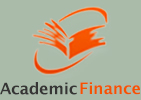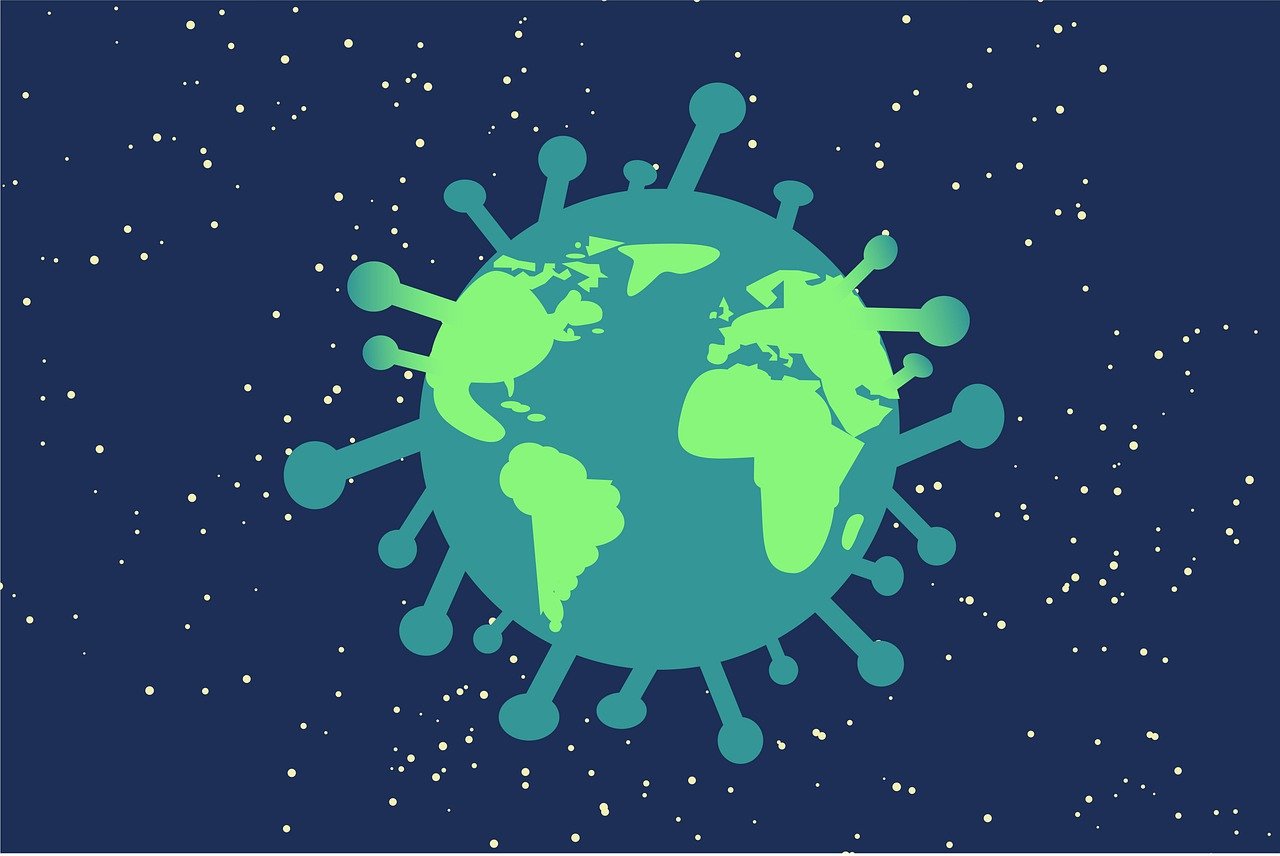Impact du COVID-19 sur l'inclusion financière dans les pays en développement
Le cas du Soudan
DOI :
https://doi.org/10.59051/joaf.v15i3.692Mots-clés :
COVID-19, Financial Inclusion, Digital Financial Services, Developing Countries, Sudan.Résumé
Objectif: Le document a étudié et analysé l'impact du COVID-19 sur l'inclusion financière numérique dans les pays en développement, en se concentrant sur le Soudan, au cours de la période 2018-2021.
Méthode: Elle est basée sur l’approche analytique descriptive et émet l’hypothèse que le COVID-19 a été un catalyseur positif pour le développement et la promotion des services financiers numériques dans les pays en développement. Les données ont été collectées à partir des bases de données de l'OMS, de la Banque mondiale, du FMI et du CBOS.
Résultats : Bien que la pandémie de COVID-19 ait eu un impact négatif sur les économies des pays en développement, elle a contribué à accroître la demande de services financiers numériques et à promouvoir l’inclusion financière. L'étude recommande aux décideurs politiques et aux régulateurs des pays en développement d'activer des partenariats entre les banques et les entreprises de télécommunications conduisant à la suppression des obstacles à l'inclusion financière (faiblesse des infrastructures pour les opérations numériques, coûts d'exploitation élevés, rigidité des procédures KYC concernant l'ouverture de nouveaux comptes bancaires et peur des transactions). avec la Fintech moderne).
Originalité/pertinence: le document a souligné la situation des services financiers dans les pays en développement et l'importance de développer et de bénéficier de la technologie financière pour améliorer l'inclusion financière numérique, en particulier à la suite de la pandémie de COVID-19.
Téléchargements
Références
ADBI. (2016). Overview of Financial Inclusion, Regulation, and Education. Asian Development Bank Institute (ADBI), Working Paper No. 591. Retrieved May 1, 2023, from https://www.adb.org/sites/default/files/publication/190672/adbi-wp591.pdf
Bank of Khartoum. (2021). Digital Banking. Retrieved June 14, 2023, from https://bankofkhartoum.com/sudan/mobile-money/
Beck, T. (2020). Fintech and Financial Inclusion: Opportunities and Pitfalls. Asian Development Bank Institute (ADBI) Working Paper 1165. Retrieved June 10, 2023, from https://www.adb.org/publications/fintech-financial-inclusion-opportunities-pitfalls
BIS. (2017). Measures of Financial Inclusion -A Central Bank Perspective. Bank for International Settlement (BIS). Retrieved May 1, 2023, from https://www.bis.org/ifc/publ/ifcb47q_rh.pdf
CBO. (2022). The Budget Outlook for 2020 to 2030 in 13 Slides. Congressional Budget Office. Retrieved April 24, 2023, from https://www.cbo.gov/
CBOS. (2006, 2018-2021). The Annual Report. Retrieved May 2, 2023, from http://www.cbos.gov.sd
Collins, D., J. Morduch, S. Rutherford, and O. Ruthven. (2009). Portfolios of the Poor: How the
World’s Poor Live on $2 a Day. Princeton University Press.
CRS. (2002). Developing Countries: Definitions, Concepts, and Comparisons. Congressional Research Service (CRS). Retrieved May 1, 2023, from https://www.mlsu.ac.in/econtents/573_Features of Developing Economies.pdf
ECLAC. (2020). Report on the Economic Impact of Coronavirus Disease (COVID-19) on Latin America and the Caribbean. Economic Commission for Latin America and the Caribbean (ECLAC). Retrieved April 26, 2023, from https://repositorio.cepal.org/bitstream/handle/11362/45603/1/S2000312_en.pdf
EBS. (2023). Electronic Banking Services Co. Ltd. (EBS), Company Details. Retrieved April 14, 2023, from https://www.ebs-sd.com/ and https://www.lusha.com/business/6eab0f2b071489b9/
Gigauri, I. (2022). The Landscape of Social Entrepreneurship Opportunities in Georgia. International Journal of Sustainable Entrepreneurship and Corporate Social Responsibility, 7(1), 1-17. http://doi.org/10.4018/IJSECSR.304897.
GSMA. (2017). The Mobile Economy. Retrieved April 25, 2023, from https://transformacaodigital.brazillab.org.br/wp-content/uploads/2019/03/GSMA-Mobile-economy-2017.pdf
GSMA (2022). The Mobile Economy. Retrieved April 25, 2023, from https://www.gsma.com/mobileeconomy/wp-content/uploads/2022/02/280222-The-Mobile-Economy-2022.pdf
Harun, R. (2012). Financial inclusion in Indian Economy. symposium on Financial inclusion in Indian organized by the Indian Institute of Public Administration, Bhubaneswar. Retrieved June 10, 2023, from https://www.bis.org/review/r120802f.pdf
IMF. (2021). World Economic Outlook. Retrieved April 24, 2023, from https://www.imf.org/en/Publications/WEO/Issues/2021/10/12/world-economic-outlook-october-2021
IMF. (2022). World Economic Outlook. Retrieved April 24, 2023, from https://www.imf.org/en/Publications/WEO/Issues/2022/10/11/world-economic-outlook-october-2022
IMF. (2023a). World Economic Outlook. Retrieved April 24, 2023, from https://www.imf.org/en/Publications/WEO/Issues/2023/04/11/world-economic-outlook-april-2023
IMF. (2023b). Financial Inclusion in Niger: Challenges and Opportunities. Retrieved June 10, 2023, from https://www.elibrary.imf.org%2Fdownloadpdf%2Fjournals%2F018%2F2023%2F007%2F018.2023.issue-007-en.pdf&usg=AOvVaw3tqK9h5gVjPr4CA4M6DUco
Kataria, S. (2022). Features of Developing Economies. Retrieved April 29, 2023, from https://www.mlsu.ac.in/econtents/573_Features of Developing Economies.pdf
Knoema. (2021). Sudan Database. Retrieved April 27, 2023, from https://knoema.com/atlas/Sudan/Humandevelopment-index
Machasio, I., N. (2020). COVID-19 and Digital Financial Inclusion in Africa: How to Leverage Digital Technologies During the Pandemic. World Bank Group. Retrieved April 25, 2023, from https://openknowledge.worldbank.org/server/api/core/bitstreams/6d281888-689d-52b6-8b76-b67e82596b5e/content Or http://dx.doi.org/10.1596/34637
Mustafa, O.A. (2022). Testing efficiency of Sudan’s Islamic banks for funding Socio-Economics Development using world rankings indices. International Journal of Islamic Economics.4(1),1-17. https://doi.org/10.32332/ijie.v4i01.4854
Mustafa, O.A. (2023). The Economic Impact of the Coronavirus [COVID-19] Pandemic on Sudan’s Foreign Trade. Journal of World Economy.2(1),7-19. https://doi.org/10.56397/JWE.2023.03.02
Mugume, R. & Bulime, E. (2022). Post‐COVID‐19 Recovery for African Economies: Lessons for Digital Financial Inclusion from Kenya and Uganda. African Development Review. 34. S161-S176. https://doi.org/10.1111/1467-8268.12652.
Njoroge, L. (2021). Financial Inclusion and COVID-19 in COMESA Region. COMESA, Monetary Institute Special Report. Retrieved April 25, 2023, from https://www.comesa.int/wp-content/uploads/2020/09/Financial-Inclusion-and-Covid-19-pandemic-1-1.pdf
Noy, I., Doan, N. Ferrarini, B., & Park, D. (2020). (2020). COVID-19 in Developing Economies: The Economic Risk of COVID-19 in Developing Countries: Where is it Highest? Centre for Economic Policy Research. International Development Journal, 38-52. Retrieved April 23, 2023, from https://cepr.org/system/files/publication-files/60038covid_19_in_developing_economies.pdf
OECD. (2011). Financial Inclusion and Financial Literacy. Organization of Economic and Cooperative Development (OECD), Seminar-Roundtable on the updates on Financial Education and Inclusion Programs in India. Retrieved May 1, 2023, from https://www.oecd.org/finance/financial-education/48303408.pdf
Pearson, Lester B, et al. (1969). Partners in Development: Report of the Commission on International Development. (New York: Praeger Publishers).
Rana NP, Luthra S, Rao HR. (2019). Key Challenges to Digital Financial Services in Emerging Economies: The Indian Context. Information Technology & People. 33(1), 198-229. http://hdl.handle.net/10454/17475
UN. (2017). Financial Regulatory Issues for Financial Inclusion. Retrieved June 10, 2023, from https://www.unescap.org/sites/default/files/S6_Regulatory-Issues-for-FI.pdf
UN. (2020). Report on the Economic Impact of Coronavirus Disease (COVID-19) on Latin America and the Caribbean. Retrieved April 23, 2023, from https://repositorio.cepal.org/bitstream/handle/11362/45603/1/S2000312_en.pdf
UNCTAD. (2021). Financial Inclusion for Development: Better Access to Financial Services for Women, The Poor, And Migrant Workers. Retrieved June 10, 2023, from https://unctad.org/system/files/official-document/ditctncd2020d6_en.pdf
UNCTAD. (2022). Assessing the Impact of COVID-19 on Africa’s Economic Development. United Nations Conference on Trade and Development (UNCTAD). Retrieved April 24, 2023, from https://unctad.org/system/files/official-document/aldcmisc2020d3_en.pdf
Veerabhadran, V. (2023). Digital Transformation in Finance: Challenges and Benefits. Retrieved June 10, 2023, from https://www.infosysbpm.com/blogs/finance-accounting/digital-transformation-in-finance-challenges-and-benefits.html
WHO. (2019). Coronavirus disease (COVID-19) pandemic. Retrieved April 23, 2023, from https://www.who.int/europe/emergencies/situations/covid-19
WHO. (2021). COVID-19 situation updates for week 50 (12-18 December 2021). Retrieved April 30, 2023, from https://www.emro.who.int/pandemic-epidemic-diseases/covid-19/covid-19-situation-updates-for-week-50-1218-december-2021.html
World Bank. (2014). Global Financial Development Report 2014: Financial Inclusion. Washington, DC. Retrieved April 26, 2023, from https://openknowledge.worldbank.org/server/api/core/bitstreams/446a24f6-0fd2-5d76-a94a-ce1fbfc6648d/content
World Bank. (2021a). Financial Inclusion, Digital Payments, and Resilience in the Age of COVID-19. The Global 2021 Findex Database. https://doi.org/10.1596/978-1-4648-1897-4
World Bank. (2021b). The Impact of COVID-19 on Digital Financial Inclusion. Global Partnership for Financial Inclusion- Special Report, Italia. Retrieved April 26, 2023, from https://www.gpfi.org/sites/gpfi/files/sites/default/files/5_WB%20Report_The%20impact%20of%20COVID-19%20on%20digital%20financial%20inclusion.pdf
World Bank. (2022). New World Bank country classifications by income level: 2022-2023. Retrieved April 30, 2023, from https://blogs.worldbank.org/opendata/new-world-bank-country-classifications-income-level-2022-2023
World Bank. (2023). World Bank Country and Lending Groups. Retrieved April 30, 2023, from https://datahelpdesk.worldbank.org/knowledgebase/articles/906519
World Data. (2023). Developing Countries. Retrieved April 30, 2023, from https://www.worlddata.info/developing-countries.php
Téléchargements
Publié-e
Comment citer
Numéro
Rubrique
Licence
(c) Tous droits réservés Omer Mustafa 2023

Cette œuvre est sous licence Creative Commons Attribution - Pas d'Utilisation Commerciale - Pas de Modification 4.0 International.
Les auteurs qui publient dans cette revue acceptent les termes suivants :
- Les auteurs conservent le droit d'auteur et accordent à la revue le droit de première publication, l'ouvrage étant alors disponible simultanément, sous la licence Licence d’attribution Creative Commons permettant à d'autres de partager l'ouvrage tout en en reconnaissant la paternité et la publication initiale dans cette revue.
- Les auteurs peuvent conclure des ententes contractuelles additionnelles et séparées pour la diffusion non exclusive de la version imprimée de l'ouvrage par la revue (par ex., le dépôt institutionnel ou la publication dans un livre), accompagné d'une mention reconnaissant sa publication initiale dans cette revue.
- Les auteurs ont le droit et sont encouragés à publier leur ouvrage en ligne (par ex., dans un dépôt institutionnel ou sur le site Web d'une institution) avant et pendant le processus de soumission, car cela peut mener à des échanges fructueux ainsi qu'à un nombre plus important, plus rapidement, de références à l’ouvrage publié (Voir The Effect of Open Access).























